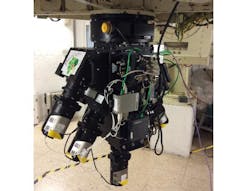Teledyne Princeton Instruments PIXIS cameras aiding in search for Earthlike planets
An international team has developed, put into operation, and done experimentation with a second-generation Multicolor Simultaneous Camera (MuSCAT2) for the 1.52 m Telescopio Carlos Sánchez at the Teide Observatory in Tenerife, Spain (Canary Islands). Japanese researchers from the Astrobiology Center and the University of Tokyo along with Spanish researchers from the Instituto de Astrofísica de Canarias developed the advanced four-color imaging instrument for studying atmospheres of transiting exoplanets.
According to the National Institutes of Natural Sciences’ Astrobiology Center, MuSCAT2 is now aiming to find and confirm a large number of transiting exoplanets, including Earth-like habitable planets orbiting stars near the Sun, in collaboration with NASA's Transiting Exoplanet Survey Satellite (TESS), launched in April 2018.
The MuSCAT2 does simultaneous four-color imaging in the 400 to 550 nm, 550 to 700 nm, 700 to 820 nm, and 820 to 920 nm bands using PIXIS cameras from scientific imaging and spectroscopy equipment manufacturer Teledyne Princeton Instruments. The PIXIS cameras are back-illuminated CCDs and include eXcelon sensor technology (patented by Princeton Instruments) to provide enhanced sensitivity and reduced etaloning (meaning that it suppresses interference fringes).
The instrument has a field of view of 7.4 × 7.4 arcmin with a pixel scale of 0.44 arcsec per pixel.
"These high-performance PIXIS detectors are among the most recent Princeton Instruments cameras, spectrographs, and optics to be installed at observatories around the world," says Michael Melle, imaging product manager at Princeton Instruments.
First-light commissioning of MuSCAT2 was made on August 24 (the night of August 23), 2017 UT. Subsequently, commissioning observations were conducted through 2017 and early 2018. The instrument started science operations in January 2018, with more than 250 telescope nights per year. The team will use MuSCAT2 in collaboration with NASA's Transiting Exoplanet Survey Satellite (TESS) more than 162 nights per year until at least 2022.
Source: Teledyne Princeton Instruments
REFERENCE:
1. Norio Narita et al., Journal of Astronomical Telescopes, Instruments, and Systems (27 Dec. 2018); https://doi.org/10.1117/1.JATIS.5.1.015001
About the Author
John Wallace
Senior Technical Editor (1998-2022)
John Wallace was with Laser Focus World for nearly 25 years, retiring in late June 2022. He obtained a bachelor's degree in mechanical engineering and physics at Rutgers University and a master's in optical engineering at the University of Rochester. Before becoming an editor, John worked as an engineer at RCA, Exxon, Eastman Kodak, and GCA Corporation.

